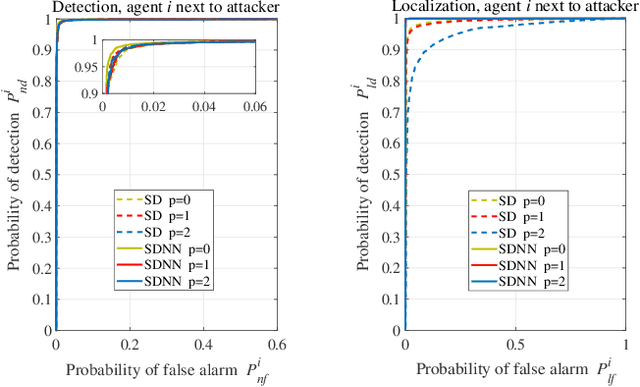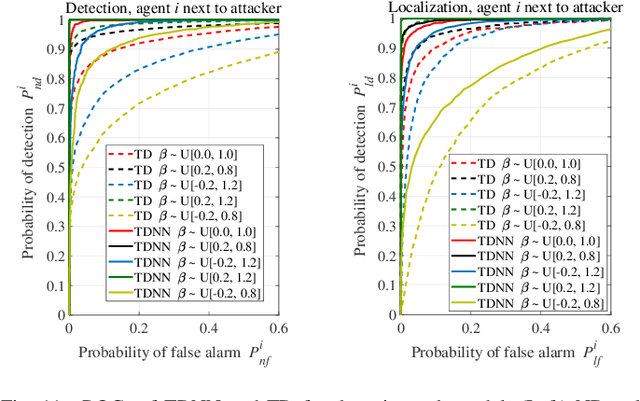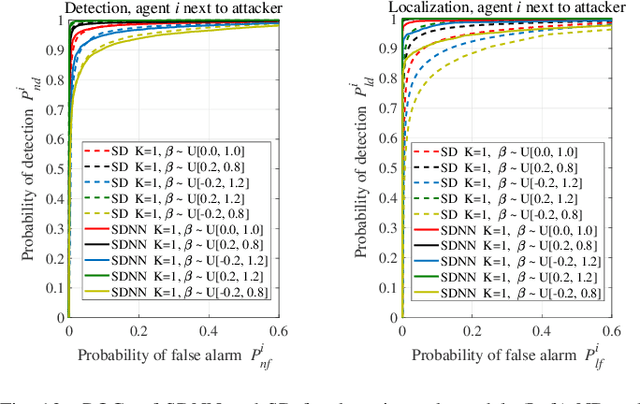Xiaohui Lin
DASECount: Domain-Agnostic Sample-Efficient Wireless Indoor Crowd Counting via Few-shot Learning
Nov 18, 2022



Abstract:Accurate indoor crowd counting (ICC) is a key enabler to many smart home/office applications. In this paper, we propose a Domain-Agnostic and Sample-Efficient wireless indoor crowd Counting (DASECount) framework that suffices to attain robust cross-domain detection accuracy given very limited data samples in new domains. DASECount leverages the wisdom of few-shot learning (FSL) paradigm consisting of two major stages: source domain meta training and target domain meta testing. Specifically, in the meta-training stage, we design and train two separate convolutional neural network (CNN) modules on the source domain dataset to fully capture the implicit amplitude and phase features of CSI measurements related to human activities. A subsequent knowledge distillation procedure is designed to iteratively update the CNN parameters for better generalization performance. In the meta-testing stage, we use the partial CNN modules to extract low-dimension features out of the high-dimension input target domain CSI data. With the obtained low-dimension CSI features, we can even use very few shots of target domain data samples (e.g., 5-shot samples) to train a lightweight logistic regression (LR) classifier, and attain very high cross-domain ICC accuracy. Experiment results show that the proposed DASECount method achieves over 92.68\%, and on average 96.37\% detection accuracy in a 0-8 people counting task under various domain setups, which significantly outperforms the other representative benchmark methods considered.
Molecular structure prediction based on graph convolutional networks
Jul 01, 2021
Abstract:Due to the important application of molecular structure in many fields, calculation by experimental means or traditional density functional theory is often time consuming. In view of this, a new Model Structure based on Graph Convolutional Neural network (MSGCN) is proposed, which can determine the molecular structure by predicting the distance between two atoms. In order to verify the effect of MSGCN model, the model is compared with the method of calculating molecular three-dimensional conformation in RDKit, and the result is better than it. In addition, the distance predicted by the MSGCN model and the distance calculated by the QM9 dataset were used to predict the molecular properties, thus proving the effectiveness of the distance predicted by the MSGCN model.
Joint Resource Allocation and Cache Placement for Location-Aware Multi-User Mobile Edge Computing
Mar 20, 2021



Abstract:With the growing demand for latency-critical and computation-intensive Internet of Things (IoT) services, mobile edge computing (MEC) has emerged as a promising technique to reinforce the computation capability of the resource-constrained mobile devices. To exploit the cloud-like functions at the network edge, service caching has been implemented to (partially) reuse the computation tasks, thus effectively reducing the delay incurred by data retransmissions and/or the computation burden due to repeated execution of the same task. In a multiuser cache-assisted MEC system, designs for service caching depend on users' preference for different types of services, which is at times highly correlated to the locations where the requests are made. In this paper, we exploit users' location-dependent service preference profiles to formulate a cache placement optimization problem in a multiuser MEC system. Specifically, we consider multiple representative locations, where users at the same location share the same preference profile for a given set of services. In a frequency-division multiple access (FDMA) setup, we jointly optimize the binary cache placement, edge computation resources and bandwidth allocation to minimize the expected weighted-sum energy of the edge server and the users with respect to the users' preference profile, subject to the bandwidth and the computation limitations, and the latency constraints. To effectively solve the mixed-integer non-convex problem, we propose a deep learning based offline cache placement scheme using a novel stochastic quantization based discrete-action generation method. In special cases, we also attain suboptimal caching decisions with low complexity leveraging the structure of the optimal solution. The simulations verify the performance of the proposed scheme and the effectiveness of service caching in general.
Detection of Insider Attacks in Distributed Projected Subgradient Algorithms
Jan 18, 2021



Abstract:The gossip-based distributed algorithms are widely used to solve decentralized optimization problems in various multi-agent applications, while they are generally vulnerable to data injection attacks by internal malicious agents as each agent locally estimates its decent direction without an authorized supervision. In this work, we explore the application of artificial intelligence (AI) technologies to detect internal attacks. We show that a general neural network is particularly suitable for detecting and localizing the malicious agents, as they can effectively explore nonlinear relationship underlying the collected data. Moreover, we propose to adopt one of the state-of-art approaches in federated learning, i.e., a collaborative peer-to-peer machine learning protocol, to facilitate training our neural network models by gossip exchanges. This advanced approach is expected to make our model more robust to challenges with insufficient training data, or mismatched test data. In our simulations, a least-squared problem is considered to verify the feasibility and effectiveness of AI-based methods. Simulation results demonstrate that the proposed AI-based methods are beneficial to improve performance of detecting and localizing malicious agents over score-based methods, and the peer-to-peer neural network model is indeed robust to target issues.
 Add to Chrome
Add to Chrome Add to Firefox
Add to Firefox Add to Edge
Add to Edge